ringed spur roller for harrow
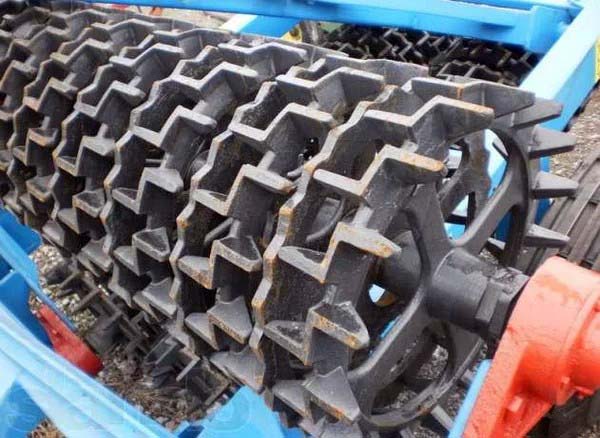
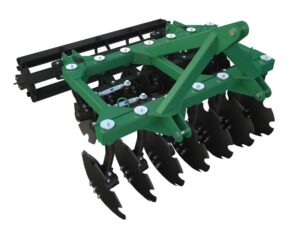
Soil tillage is a crucial agricultural practice that prepares the soil for planting, promotes healthy crop growth, and improves soil structure. One of the essential tools for this process is the harrow, which is used for various soil operations. This article provides an overview of different types of harrowing tasks, their purposes, and the harrows designed for specific functions.
The structure of the soil is observed in the form of lumps, “separates” and cracks, as well as voids. Soil particles can be connected by root threads and mycelium hyphae. On the surface of the soil there is a layer of dead plants. Under the soil layer there is a soil-forming rock with efflorescence of mineral salts.
Plowing and harrowing most seriously disturb and destroy the structure. But after moistening, after exposure to microorganisms and new plant roots, the soil forms a new structure. So, it is necessary to change the structure of the soil layer, and harrowing is applied. Harrowing with a disk harrow we use to make fire breaks or to maintain existing fire breaks, so we can obtain good results, it is of less money than a plowing by forest plow.
These are harrowing methods in accordance with the tasks of processing the top layer of soil.

ringed spur roller for harrow
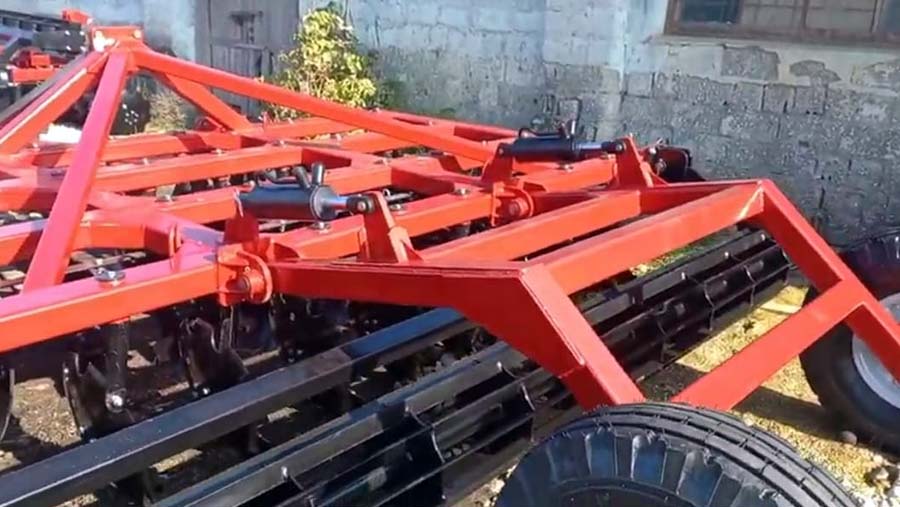
a kind of a disc harrow with a roller
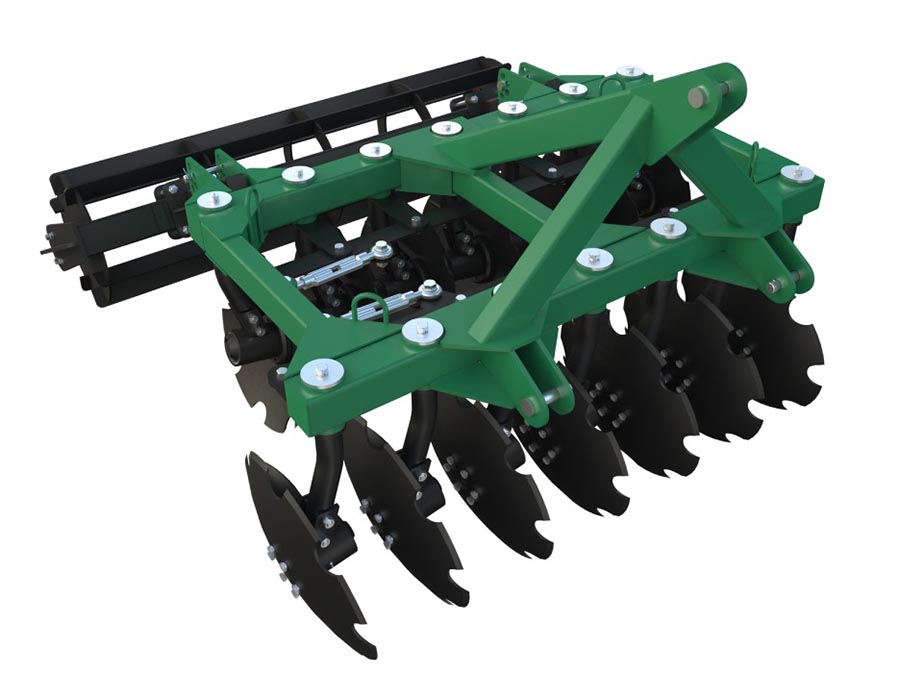
Disc harrow with daisy discs and roller
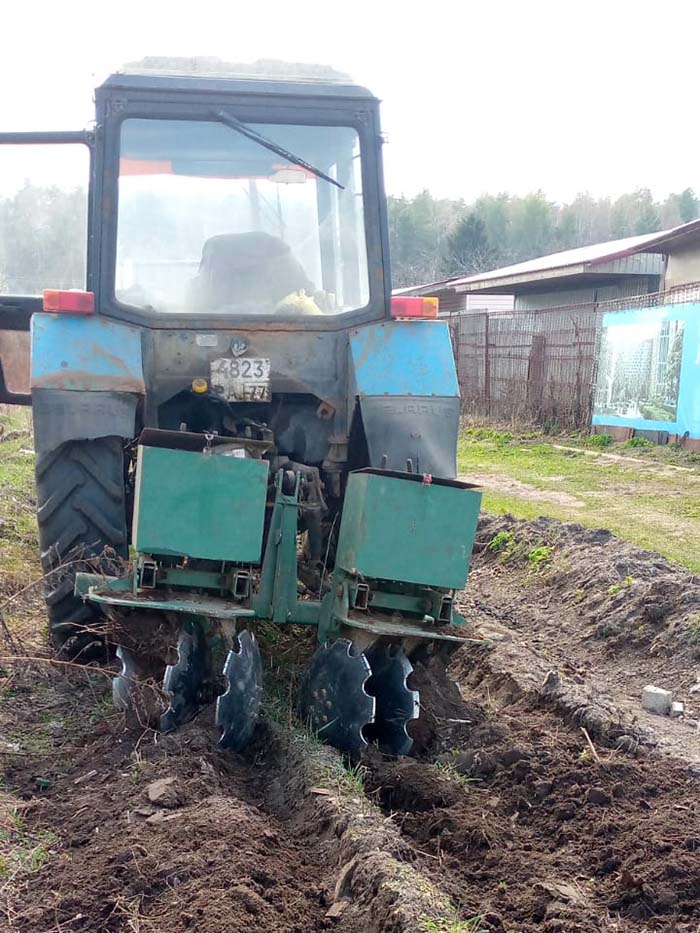
soil disc harrowing
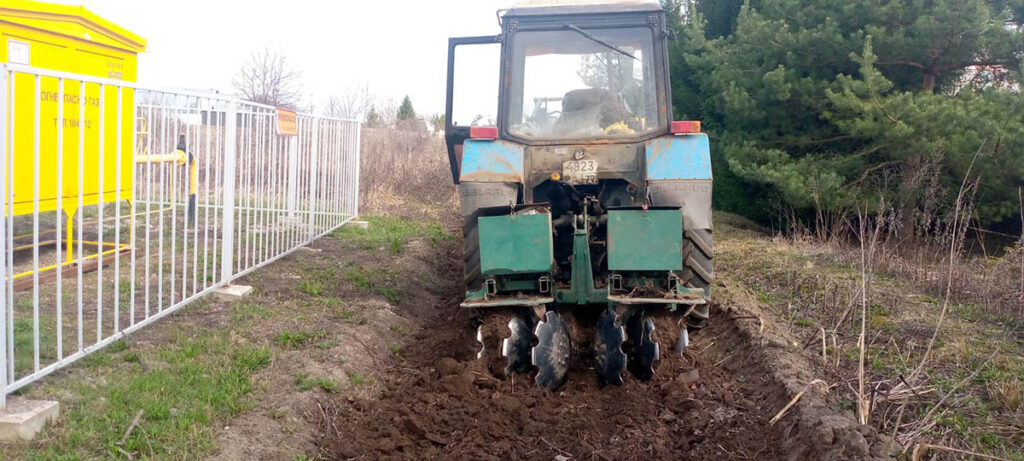
Maintaining a mineralized firebreak with a disc harrow
Operation. After plowing, large clods of earth remain on the surface, making it uneven and difficult for sowing. This step involves breaking these clods into finer particles and leveling the soil.
Harrow Type. Disc harrow or Tine harrow.
Disc harrow. A disc harrow consists of concave steel discs mounted on axles. As the discs rotate, they cut into the soil, chopping and turning over clods. This harrow is particularly effective on heavier soils and provides aggressive soil tillage. It’s also versatile, used in both primary and secondary tillage.
Tine harrow. This harrow has flexible tines made from steel or springy metal that vibrate as they move through the soil. It’s excellent for lighter soils, where it helps break up the topsoil and provide gentle tillage without disrupting soil structure deeply.
Complex harrow. The most common type of harrow used is a complex harrow with a row of discs and a roller, with a row of discs followed by a row of teeth or spring teeth. Two or more working bodies.
Operation. Post-harvest, crop residues or organic matter like compost or manure need to be mixed into the soil to enhance fertility and structure. This task helps in accelerating decomposition and improving nutrient content.
Harrow Type. Disc harrow or Spring-tooth harrow.
Disc harrow. The disc harrow, with its rotating concave discs, is excellent for cutting through thick residues like straw, weeds, or manure. It ensures that organic material is well-mixed into the soil for faster breakdown and nutrient availability.
Spring-tooth harrow. A spring-tooth harrow has sturdy, curved tines made of flexible steel. These tines penetrate the soil and spring back, loosening and turning the soil. This harrow works well on medium to heavy soils, ensuring residues are incorporated without excessive compaction.
Operation. A smooth and fine seedbed ensures good seed-to-soil contact, promoting germination and seedling establishment. This task is aimed at refining the soil after initial tillage.
Harrow Type. Spike harrow or Chain harrow.
Spike harrow. This harrow has metal spikes arranged in rows, which scrape the soil’s surface. It is ideal for final seedbed preparation because it breaks up small clods and creates a uniform, soft layer of soil perfect for sowing.
Chain harrow. A chain harrow consists of flexible chains with spikes or tines attached. It drags over the soil, smoothing it while gently aerating and loosening the top layer. It is most effective for light tillage, ideal for seedbed finishing.
Operation. Weeds compete with crops for nutrients, water, and light. Harrowing can mechanically control weeds by uprooting or burying them before they grow too large.
Harrow Type. Spring-tooth harrow or weeder harrow.
Spring-tooth harrow. With its spring-loaded tines, this harrow is capable of disturbing the soil to dislodge shallow-rooted weeds. The spring action allows it to break up weeds without disrupting crops or compacting the soil.
Weeder harrow. A weeder harrow is designed with closely spaced, fine tines that disturb the topsoil to uproot or bury weeds. It is often used in organic farming to control weeds between crop rows without the need for chemicals.
Operation. After seeding or applying fertilizers, it’s crucial to cover them lightly with soil for protection from wind, water, and wildlife. Harrowing helps ensure even coverage.
Harrow Type. Chain harrow or Rotary harrow.
Chain harrow. Chain harrows, with their light touch, can drag over the surface to lightly cover seeds and fertilizers, preventing wind or water erosion. It provides gentle tillage without deep disturbance.
Rotary harrow. Rotary harrows have rotating blades or teeth that churn the soil at varying depths. These are effective for covering seeds in uneven terrains, working efficiently in heavier soils, and ensuring good seed-to-soil contact.
Operation. Aerating compacted soils improves water infiltration and root penetration, promoting healthier plant growth.
Harrow Type. Aerator harrow or Spike harrow.
Aerator harrow. This harrow is designed with long spikes or prongs that penetrate the soil deeply to create small holes. These holes allow for better water, air, and nutrient movement within the soil, which is vital for deep root growth.
Spike harrow. Similar to an aerator, the spike harrow also has metal spikes, though it operates at shallower depths. It is excellent for breaking surface crusts and improving air exchange in the topsoil layers.
The term “soil hoeing” or cultivation refers to the process of pinching, chopping, or slicing a shallow layer of soil to break it up and expose it to air. This operation helps improve aeration, drainage, and soil structure without deep tillage. It is typically used to control weeds, incorporate crop residues, or prepare the seedbed while minimizing soil disturbance. Сultivation means to turn the soil into a fine tilth to provide the ideal environment for seeds. Soil hoeing is one of cultivation technique and a method of weed cut.
The harrow best suited for soil cultivation is the disc harrow or a knife harrow.
A disc harrow is made up of a series of concave steel discs mounted on an axle. These discs cut into the soil as they rotate, effectively “peeling” or slicing the surface layer. The cutting action breaks up soil clods and weeds, while also lightly turning the soil.
The harrow cultivator consists of discs with cutouts, a daisy disc. Daisy disc is more aggressive, cuts crop residues and deep them in soil layer
The disc harrow’s ability to chop and slice shallow layers of soil makes it effective for peeling the topsoil. It breaks down the surface crust and allows better air and water infiltration, improving soil health.
A knife harrow features sharp, straight blades or coulters that are designed to slice through the soil without turning it over. This creates minimal disturbance while effectively peeling the soil surface.
Knife harrows excel at cutting through soil and crop residues, pinching or peeling the top layer. This tool is ideal for shallow tillage, where maintaining soil structure and reducing compaction are important.
Both of these harrows are excellent for shallow, precise tillage, making them suitable for operations where minimal soil disturbance is desired.
We note that quite often several rows with different working elements are installed on one body, resulting in a composite complex harrow. The use of a complex harrow allows you to combine operations and save fuel, this is an advantage. It is clear that complex harrows break down more often.
Different types of harrows serve specific purposes in soil tillage, from preparing a seedbed to managing weeds or incorporating organic matter. Choosing the right harrow for the task ensures effective soil management, leading to better crop yields and healthier soil over time. Each type of harrow – from disc harrows we often use, to spring-tooth or chain harrows – is designed to perform a particular function, making them indispensable tools in modern agriculture.